Preface
First time seemed to be a bad idea. But on the Front Page you can reed the following: "SummitPost is a collaborative content community focused on climbing, mountaineering, hiking
and other outdoor activities ". So, after I was thinking that how many kind of continental creatures, bugs, plants or animals may appear on SummitPost, I decided to create this page dedicated to the wonderful underwater world. Of course, if the content of the page will not meet the sympathy of many summitposters, I am deleting it. I think it is worth the trouble…
Underwater photography
Underwater photography has never been easier, yet many people return from diving trips disappointed with their results. You have only a limited amount of time with your subject. You are unable to communicate properly with other humans while underwater. Everything is on the move, including yourself, and an additional problem is that your photo equipment could become flooded and useless in a moment. All this makes photography more problematical than on land. The optical characteristics of water don't help. If you enjoyed 30m of visibility on your last dive, you would have been ecstatic. You would have searched for superlatives to describe it. If you found yourself enjoying similar visibility on the Preston bypass, you would probably be cursing the weather, and driving very slowly. So even before we get to the Ten Commandments, the overriding rule of underwater photography is: Get rid of as much water as you can!
The ten commandments of underwater photography
1. Get close
As soon as you want to photograph ordinary subjects, you will find that the amount of water between them and your lens gives you problems of image sharpness, suspended matter intruding, and the white light from your flash getting absorbed before it has travelled all the way through the water to your subject and back to your camera. So get rid of as much of the water as you can by getting nearer to your subject and retaining the image size by using a wide-angle lens. Wide-angle lenses are not used underwater to record the 'big' scene so much as to allow the photographer to record an average-sized subject as clearly as possible.
2. Bring your own light
Light is absorbed selectively by water. Not only does it get darker as you go deeper, but only the monochromatic blue rays of sunlight penetrate more than a few metres through the water. This means you need to bring your own source of white light with you, and, for still photography, that comes in the form of an underwater flashgun.
3. Start small
Macro, or close-up, shots are the easiest form of photograph to take underwater. Close-up kits allow you to enter the water with your equipment preset. Even your flashgun can be pre-positioned in relation to the framing device so that your results can be predetermined and always successful.
Placing the framer around the subject and releasing the shutter at the right moment is all that is necessary for a correctly exposed, well-lit, in-focus shot. Even those with more expensive cameras in submarine housings can pre-position their lighting. For this reason alone, many divers new to underwater photography start by concentrating on macro subjects.
4. Compose it
Have you noticed that many people use a camera as if it were a hunting rifle? They position their subjects under the central cross in the camera's viewfinder, then are surprised to find that their photos come back with endless amounts of sky above the heads.
The same sort of thing happens with these photographers underwater. The camera's viewfinder should be used like a canvas of a painting. Fill the frame, compose your picture. Don't just 'shoot to kill'!
5. Don't shake
Camera-shake is still the most common reason for failed photographs.
Because you are in a fluid environment you could be confused into thinking that everything is very smooth. The reality is that more often than not your subject is moving. You almost certainly are!
Modern-thinking photographers do not brace themselves by holding on to coral. It is important to use a fast shutter speed (one that represents only a tiny fraction of a second, such as 1/250), be as still as you can by controlling your breathing, and release the shutter as gently as possible.
This is easier said than done. Many cameras do not synchronise with their flashguns at such fast shutter settings. Then again, things often happen very quickly underwater, and some of the best shots have to be grabbed.
When you can, take your time. Move in a relaxed way and keep calm.
6. Avoid back-scatter
Where best to place the flashgun? Remember, you are working in 'foggy' conditions. Car headlights on full-beam reflect off the fog and make it difficult to penetrate.
Fog-lights are positioned as far away from the driver's eye-line as possible, so do the same thing with your flashgun. Just as fog is caused by millions of tiny water droplets suspended in the air, the water you dive in has countless bits of detritus suspended in it.
By positioning the flashgun far from the camera's lens axis, you avoid reflecting the light off this suspended matter and deny your pictures the unattractive effect known as 'back-scatter'.
'Built-in' flashguns are good only for use in air. You should either position your flash at the end of a long mounting arm, or temporarily detach it and use it at arm's length. Be careful to hold it so that it does not intrude into your picture.
Modern camera electronics combined with through-the-lens exposure control, even for the flashgun, have made getting the exposure right almost child's play.
7. Exploit your buddy
Your buddy might be called in to play as model, lighting rigger, or wild-life herdsperson. People who have buddies who intuitively do what they want are very lucky. Shots without people usually mean nothing to your non-diving audience.
8. Be selective
Sadly, we usually have to work within the limits of the circumstances in which we find ourselves, but as far as possible you should restrict your work to dives when conditions are favourable.
Even Peter Scoones, that doyen of marine-life cameramen, once said to me that his ideal dive site would have gin-clear water, no currents, plenty of animal action, and be only a couple of metres from the surface. Dream on, Peter!
9. Get pre-set
Modern single-lens-reflex cameras in submarine housings usually have automatic focusing. However, this is not usually responsive enough to cpture fast-moving subjects like mammals and sharks, and you can miss what's happening around you if your head is stuck to an eyepiece.
Pre-focus your SLR, or use a viewfinder camera and be ready to shoot from the hip.
There is enough to think about on a dive. Make all the technical decisions you can while on the surface and work to a predetermined formula that you know.
10. Shoot lots of film
Diving can be expensive if you add up the cost of each minute under water, but the experience can be precious and is usually unrepeatable. Have lots of goes at a shot on which you are particularly keen. Be prepared to shoot lots of film. After all, it is probably the cheapest element of your underwater photography costs!
Red Sea
A few words about this part of world
The Red Sea lies between arid land, desert and semi-desert. The main reasons for the better development of reef systems along the Red Sea is because of its greater depths and an efficient water circulation pattern, The Red Sea water mass exchanges its water with the Arabian Sea, Indian Ocean via the Gulf of Aden. These physical factors reduce the effect of high salinity caused by evaporation water in the north and relatively hot water in the south.
The climate of the Red Sea is the result of two distinct monsoon seasons; a northeasterly monsoon and a southwesterly monsoon. Monsoon winds occur because of the differential heating between the land surface and sea. Very high surface temperatures coupled with high salinities makes this one of the hottest and saltiest bodies of seawater in the world. The average surface water temperature of the Red Sea during the summer is about 26 °C (79 °F) in the north and 30 °C (86 °F) in the south, with only about 2 °C (3.6 °F) variation during the winter months. The overall average water temperature is 22 °C (72 °F). The rainfall over the Red Sea and its coasts is extremely low, averaging 0.06 m (2.36 in) per year. The rain is mostly in the form of showers of short spells, often associated with thunderstorms and occasionally with dust storms. The scarcity of rainfall and no major source of fresh water to the Red Sea result in the excess evaporation as high as 205 cm (81 in) per year and high salinity with minimal seasonal variation. A recent underwater expedition to the Red Sea offshore from Sudan and Eritrea found surface water temperatures 28°C in winter and up to 34°C in the summer, but despite that extreme heat the coral was healthy with much fish life with very little sign of coral bleaching, and there were plans to use samples of these corals' apparently heat-adapted commensal algae to salvage bleached coral elsewhere.
The Red Sea is a rich and diverse ecosystem. More than 1200 species of fish have been recorded in the Red Sea, and around 10% of these are found nowhere else. This also includes 42 species of deepwater fish.
The rich diversity is in part due to the 2,000 km (1,240 mi) of coral reef extending along its coastline; these fringing reefs are 5000–7000 years old and are largely formed of stony acropora and porites corals. The reefs form platforms and sometimes lagoons along the coast and occasional other features such as cylinders (such as the Blue Hole (Red Sea) at Dahab). These coastal reefs are also visited by pelagic species of red sea fish, including some of the 44 species of shark.
The Red Sea also contains many offshore reefs including several true atolls. Many of the unusual offshore reef formations defy classic (i.e., Darwinian) coral reef classification schemes, and are generally attributed to the high levels of tectonic activity that characterize the area.
The special biodiversity of the area is recognized by the Egyptian government, who set up the Ras Mohammed National Park in 1983. The rules and regulations governing this area protect local marine life, which has become a major draw for diving enthusiasts.
Divers and snorkellers should be aware that although most Red Sea species are innocuous, a few are hazardous to humans.
My very first uw photos, August, 2010.
For the second time in Sharm-el-Sheikh, Egypt, in August 2010, with my brand new Open Water Diver licence and a hired TZ2 Lumix camera and its underwater case. Most of the photos were taken at the house reef of our hotel.
![The reef]() The home reef at Sheraton Hotel The home reef at Sheraton Hotel | ![Tiran Island]() Tiran Island Tiran Island |
![Chaetodon austriaus]() Chaetodon austriaus Chaetodon austriaus | ![Chaetodon fasciatus]() Chaetodon fasciatus Chaetodon fasciatus |
![My favourite, the Spot-fin porcupinefish]() My favourite, the Spot-fin porcupinefish My favourite, the Spot-fin porcupinefish | ![Rhinecanthus assasi]() Rhinecanthus assasi Rhinecanthus assasi |
![Cheilinus lunulatus]() Cheilinus lunulatus Cheilinus lunulatus | ![Corals]() Corals Corals |
![Wrecked ship at Gordon reef]() Wrecked ship at the Gordon reef Wrecked ship at the Gordon reef | ![Sunrise above Tiran Island]() Sunrise above the Tiran Island Sunrise above the Tiran Island |
![Taeniura lymma]() Taeniura lymma Taeniura lymma | ![Amphiprion bicinctus]() Amphiprion bicinctus Amphiprion bicinctus |
![Diversity]() Diversity Diversity | ![Epinephelus tauvina]() Epinephelus tauvina Epinephelus tauvina |
![Brain coral]() Brain coral Brain coral | ![Pomacanthus imperator]() Pomacanthus imperator Pomacanthus imperator |
![Caesio suevica]() Caesio suevica Caesio suevica | ![Gorgonia ventalina]() Gorgonia ventalina Gorgonia ventalina |
![Papilloculiceps longipes]() Papilloculiceps longipes Papilloculiceps longipes | ![Arothron diadematus]() Arothron diadematus Arothron diadematus |
![Platax teira]() Platax teira Platax teira | ![Naso lituratus]() Naso lituratus Naso lituratus |
![Tridacna maxima]() Tridacna maxima Tridacna maxima | ![Heterocentrotus trigonarius]() Heterocentrotus trigonarius Heterocentrotus trigonarius |
![Chaetodon semilarvatus]() Chaetodon semilarvatus Chaetodon semilarvatus | ![Cephalopholis miniata]() Cephalopholis miniata Cephalopholis miniata |
Some new pics captured at Hurghada, May 2011.
- Common Lionfish
Pterois miles is known as the common lionfish or devil firefish. It is frequently confused with its close relative, the red lionfish (Pterois volitans).
Length up to 35 cm. This lionfish varies in colour from reddish to tan or grey, and has a feathery dorsal fin and wing-like pectoral fin.
Inhabits areas with crevices or lagoons, often on the outer slope of coral reefs 0,2 to 90m. Hovers near ledges, caves and in wrecks by day. At dusk and at night, roams the reef hunting for fishes, crabs and shrimps. Their feathery pectoral fins are used to corral prey to within striking distance. Often attracted by divers’ lights which distract prey. May charge divers with dorsal spines pointed forward.
Fin spines are highly venomous and can be dangerous to humans. Stings extremely painful.
Range: Red Sea to Sumatra, south to S. Africa. Also known in eastern Mediterranean.
| ![Pterois miles]() Common Lionfish Common Lionfish |
![Mr. Red Sea]() Devil Scorpionfish Devil Scorpionfish | Devil Scorpionfish
Devilfishes (also called sea goblins, bearded ghouls and demon stingers) have very special pectoral fin rays that can be moved independently from the rest of the fin. This looks as if the devilfish was walking over the ground. They look very clumsy and unwieldy because they also drag their extremely curved tails. The inner surface of their pectoral fins are brightly colored and they flash them if threatened. Sometimes several fish lie together.
Devilfishes occur on sand and mud bottoms close to reefs and in seagrass meadows 1 to 70 m. They often bury themselves in the substrate. Lies motionless on rubble, sand algae or corals. Often misindetified as the stonefish, but flashes volourful underside of pectoral fins.
Range: Red Sea to Hawaii and Pitcairn Islnad, north to Ryukyus, south to South Africa and GBR. |
Stonefish
Synanceia verrucosa is a fish species, sometimes lethal to humans, which is known as the reef stonefish or simply stonefish. They are carnivorous ray-finned fish with venomous spines that lives on reef bottoms, camouflaged as a rock. They are the most venomous known fish in the world. Stings extremely painful, occasionally fatal without medical attention.
Stonefish have a mottled greenish to mostly brown colour, which aids in its ability to camouflage itself among the rocks of many of the tropical reefs. Bulbous body with vertical mouth, tiny eyes and large pectoral fins. Dorsal spines hidden beneath warty skin.
It eats mostly small fish, shrimp and other crustaceans.
The average length of most stonefish is about 30-40 centimeters. The largest Stonefish ever recorded was 51 centimeters long. Often partially buried or under rocks, may stay on site for month.
Its main habitat is on coral reefs, around dull coloured plants, near and about rocks, or can be found dormant in the mud or sand.
Range: Red Sea to Fr. Polynesia, north to S. Japan, south to S. Africa.
![Synanceia verrucosa]() Stonefish Stonefish | |
- Giant moray
As the name suggests, this is a large eel, reaching up to 300 cm (10.0 ft) in length and 30 kg (66.1 lbs) in weight. While juveniles are tan in colour with large black spots, adults have black specks that grade into leopard-like spots behind the head and a black area surrounding the gill opening.
Inhabits lagoon and seaward reefs, 1 to 46 m. Feeds primaly on fishes, occasionally on crustaceans. Mormally docile and occasionally ‘tamed’ by dive guides, but has been implicated in unprovoked attacks and caused severe injury. Being at the top of the food chain it is likely to cause ciguatera poisoning if eaten.
Range: Red Sea to Marquesas and Pitcairn, north to Ryukyus and Hawaiian Is., south to S. Africa; absent from Arabian Gulf and Oman.
| ![Gymnothorax javanicus]() Giant moray Giant moray |
- Bluespotted ribbontail ray
The bluespotted ribbontail ray (Taeniura lymma) is a species of stingray in the family Dasyatidae. Found from the intertidal zone to a depth of 30 m (100 ft), this species is common throughout the tropical Indian and western Pacific Oceans in nearshore, coral reef-associated habitats. It is a fairly small ray, not exceeding 35 cm (14 in) in width, with a mostly smooth, oval pectoral fin disc, large protruding eyes, and a relatively short and thick tail with a deep fin fold underneath. It can be easily identified by its striking color pattern of many electric blue spots on a yellowish background, with a pair of blue stripes on the tail.
At night, small groups of bluespotted ribbontail rays follow the rising tide onto sandy flats to root for small benthic invertebrates and bony fishes in the sediment. When the tide recedes, the rays separate and withdraw to shelters on the reef. Reproduction is aplacental viviparous, with females giving birth to litters of up to seven young. This ray is capable of injuring humans with its venomous tail spines, though it prefers to flee if threatened. Because of its beauty and size, the bluespotted ribbontail ray is popular with private aquarists despite being poorly suited to captivity. The International Union for Conservation of Nature (IUCN) has listed this species as Near Threatened, as it faces widespread habitat degradation and intensive fishing pressure throughout its range.
Range: Red Sea to Solomon Is., north to Oman, south to E. Africa and Maldives.
| ![Taeniura lymma]() Bluespotted ribbontail ray Bluespotted ribbontail ray |
- Yellowbar angelfish
Pomacanthus maculosus, also known by the common names yellowbar angelfish, half moon or blue moon angelfish, and map angelfish, is a marine angelfish distributed throughout the Persian Gulf, the northwestern Indian Ocean and Red Sea. The species lives mainly in coral and rocky areas, in shallow to moderate depths (forty feet), though it is more often in silty reef areas than in rich coral growth. It occasionally makes its way into the aquarium trade.
The maculosus angelfish grows to a size of 50cm in length. It is very similar in appearance the asfur angelfish which is found in over-lapping habitats in the Persian Gulf and Red Sea. The maculosus can be distinguished from the asfur primarily by its tail color, which is pale to clear, while the asfur's tail is bright yellow.
As with other large angelfish in genus Pomacanthus, juveniles and sub-adults are differently marked and colored than adults. Small maculosus angelfish are alternately blue-white and black banded.
Maculosus angelfish have a diet typical of other angelfish. Their main source of food is sponges. They also eat small anemones, algae, tubeworms, and shrimp.
| ![Pomacanthus maculosus]() Yellowbar angelfish Yellowbar angelfish |
![Cirripectes castaneus]() Chestnut blenny Chestnut blenny | ![Arothron diadematus]() Masked puffer Masked puffer | ![Plectorhinchus gaterinus]() Blackspotted sweetlips Blackspotted sweetlips | ![Arothron stellatus]() Stary puffer Stary puffer |
![Seriatopora hystrix]() Finger coral Finger coral | ![Pygoplites diacanthus]() Regal angelfish Regal angelfish | ![Parapercis hexophtalma]() Speckled sandperch Speckled sandperch | ![Chromodoris quadricolor]() Pyjama chromodorid Pyjama chromodorid | ![Tubastrea micrantha]() Dark cup coral Dark cup coral |
![Pomacanthus maculosus]() Pomacanthus maculosus Pomacanthus maculosus | ![Spirobranchus giganteus]() Spirobranchus giganteus Spirobranchus giganteus |
Marsa Alam - Egypt, September 2011
A trip in a world of silence and tranquility
Coral reefs are the world's biggest single structures made by living organisms. The reef structure is composed of and built by billions of tiny organisms, known as coral polyps. This reef supports an unbelievably wide diversity of life.
Let us agree to the title is a little bit misleading: as in the tropical rainforests there is never silence, so the traveler who gets under the water somewhere around a coral reef, it is not condemned to quietude. Beside the noises produced by the different sea creatures, the perpetual champ and pecking, the rumble of undertow at the places frequently visited by divers adds the humming of boat-engines, further noises generated by divers to keep contact: pips of whistles, ring of bells etc. Of course, comparing to the accustomed cacophony of the surface this is self the heavenly tranquility. However it is good to know that behind this apparent calmness runs a red battle… Here everybody stands on guard, the flagging attention easily can carry to the end: the small fish consumes the smaller one, the small fish is hunted by the bigger one…this continual struggle is nontrivial for the first glance and this gives that false sense of repose.
Let’s have a look behind this blue curtain, and with a little fortune we can discover some of the thousands secrets of this amazing world.
![Chaetodon auriga]() Threadfin butterflyfish Threadfin butterflyfish | ![Ecsenius dentex]() Dentex blenny Dentex blenny |
![Pterois miles]() Common Lionfish Common Lionfish | |
![Papilloculiceps longiceps]() Indian Ocean crocodilefish Indian Ocean crocodilefish | ![Pseudanthias squamipinnis]() Lyretail coralfish Lyretail coralfish |
![Pardarchirus marmoratus]() Moses sole Moses sole | |
![Paracirrhites forsteri]() Freckled hawkfish Freckled hawkfish | ![Saurida gracilis]() Slender lizardfish Slender lizardfish |
![Dascyllus humbug]() Humbug dascyllus Humbug dascyllus | |
![Oxymonacanthus halli]() Harlequin filefish Harlequin filefish | ![Pterois miles]() Common Lionfish Common Lionfish |
![Sphyraena barracuda]() Great barracuda Great barracuda | |
![Amblyglyphidodon incidus]() Pale damselfish Pale damselfish | ![Leafy cup coral]() Leafy cup coral Leafy cup coral |
![Octopus cyaneus]() Reef octopus Reef octopus | |
![Ocypode saratan]() Red Sea ghost crab Red Sea ghost crab | ![Balistoides viridescens]() Titan triggerfish Titan triggerfish |
![Balistoides viridescens]() Titan triggerfish Titan triggerfish | |
![Gymnothorax javanicus]() Giant moray Giant moray | |
![Cephea cephea]() Cauliflower jellyfish Cauliflower jellyfish | |
22-27 September 2011, Marsa Alam, Egypt.
A korall-zátonyokat joggal tekinthetjük a tengerek esőerdeinek, a nyílt óceánok sivatagjához képest ez egy elképesztő, egy fantasztikusan színes vízalatti világ. A korallzátonyok nyújtotta biológiai sokféleség szinte felülmúlhatatlanul gazdag. A szirteket főként kőkorallok és szarukorallok építik fel, a szirtek és zegzugaik hallatlanul sokszínű élővilágnak nyújtanak megélhetési és megtelepedési lehetőséget.
Maradjunk ezért annyiban, hogy a cím egy kicsit félrevezető: amint a trópusi esőerdőkben sincs soha csend, úgy a korall-zátonyok környékén a víz alá tévedő utazó sincs csöndre kárhoztatva. A tengeri élőlények által keltett zajok, a folytonos rágcsálás, csipegetés kattogása, csattogása mellett a szirteken megtörő hullámok morajához még hozzájárul a búvárok által sűrűn látogatott helyeken a csónakok, hajók motor-zúgása, az egyes búvár-csoportokat összetartó csengők, sípok hangja, a búvár saját légzőkészülékének sziszegése, a kifújt levegő gyöngyöző bugyborékolása. Persze a szárazon megszokott hangzavarhoz képest ez maga a mennyei nyugalom. Jó tudni azonban, hogy ezen látszólagos nyugalom mögött élet-halál harcok bújnak meg. Itt mindenki résen van, a figyelem pillanatnyi lankadása könnyen a véget jelentheti: a kis hal felfalja a még kisebb planktont, rákot, korall-polipot, a kis halat a nagyobb hal vadássza le, a nagyobb halakra pedig a még náluk is nagyobbak lesnek. Ez az folytonos egymásnak feszülés az esetek többségében első ránézésre nem is nyilvánvaló, ezért van az ebbe az idegen közegbe látogatónak ez a hamis nyugalom képzete.
Nézzünk egy kicsit e kék függöny mögé, kis szerencsével nekünk is feltárulhat ennek a csodálatos világnak ezernyi titka közül néhány…
2011. Szeptember 22-27, Marsa Alam, Egyiptom.
Mediterranean Sea
Corsica - France, June 2011
Pictures were taken on the beach and the Guardiola diving place at Ajaccio.
![Platichthys flesus]() Platichthys flesus Platichthys flesus | ![Somebody regards you!]() Somebody regards you! Somebody regards you! |
![Trachinus draco]() Trachinus draco - Greater weever
Trachinus draco - Greater weever![Jellyfish]() Jellyfish
Jellyfish
![Anemonia viridis]() Anemonia viridis Anemonia viridis | ![Acetabularia acetabulum]() Mermaid's wineglass Mermaid's wineglass |
![Underwater]() Landscape with diver Landscape with diver | ![Sea urchin]() Sea urchin Sea urchin |
![Coris julis]() Mediterranean rainbow wrasse Mediterranean rainbow wrasse | |
Pag Island - Croatia, April 2012
Seeing that I had lost the hiking planned to Lago di Garda in Italy on the long weekend of 1st of May, as an auxiliary resolution I applied for a diving tour to the Adriatic Sea in Croatia. As it cleared up later, the did a right decision, because I had part of a very nice and instructive trip. The temperature of water was quite low yet, however we had a shiny fine weather all of the four days long, and except of the warm water we had all the conditions for some pleasant season beginning dives.
Our host was the
Blue Bay Hungarian Diving Center, in Stara Novalja on the Pag Island (Pag otok), with two fast boats and a helpful staff.
First day things started a little bit haltingly with the ckecking-dive, setting our weight and recalling some half-forgotten skills took some more time, but finally everybody managed to go underwater. The water really wasn’t warm, on the surface about 16-17°C, then with depth temperatures went more and more hereinafter, at 15-20 meters under the surface our computers indicated even 13-14 degrees. Right for a setout in the shallow water nearby the base we had the fortune to meet two seahorses, alas we didn’t have any camera at hand, so could not perpetuate them.
During the further dives we boated more and more farther on and we could see from walls of several ten meters to sandy plains almost everything, flora and fauna was quite diversified and at least I found my perfect weight and for the last dive we got acclimatized even with the cold water...
Dive places: Mini Pastura, Vidonjica, Triget Greben, Veliki Zid.
![Mini Pastura]() Mini Pastura Mini Pastura | ![User Profile Image]() Me under Mini Pastura Me under Mini Pastura |
![Serranus scriba]() Painted comber Painted comber | ![Astropecten aranciacus]() Orange sea star Orange sea star |
![Cribrinopsis crassa]() Thick-tentacled anemone Thick-tentacled anemone | ![Eunicella cavolini]() Yellow gorgonian Yellow gorgonian |
![Echinaster sepositus]() Red Starfish
Red Starfish![Bispira volutacornis]() Twin Fan Worm
Twin Fan Worm
Vendéglátónk a Blue Bay magyar búvárbázis volt, a Pag szigeti Stara Novalja-ban, két gyors zodiac-kal és segítőkész személyzettel.
Az első napon a check-dive-al elég vontatottan indult a történet, a súly-beállítás és a félig elfelejtett rutinok felelevenítése nem ment gyorsan, de aztán csak sikerült víz alá helyeznünk magunkat. A víz tényleg nem volt meleg, a felszínen 16-17 fokos, aztán a mélységgel a hőmérséklet is egyre lejjebb szállt, 13-14 fokokat is mutattak a computerek. Mindjárt kezdésnek a bázis melletti sekély vízben sikerült összefutni két vízi-csikóval, sajna kamera éppen nem volt kéznél, ezért nem tudtuk őket megörökíteni.
A további merülésekkel egyre távolodtunk a bázistól, méretes falaktól kezdve a homokos lapályokig mindent láttunk, az élővilág is elég változatos volt, a végére a tökéletes kisúlyozásomat is sikerült megoldani. A hideg vizet is megszoktuk, az utolsó merülésen, szintén csak a bázisnál, a 16 fokost már szinte kellemesnek éreztük.
Tanulságban is gazdag volt a túra, kiderült, hogy már az első merülésnél érdemes addig sakkozni, hogy a súlyozás tökéletes legyen, még ha ez valamivel több időt is igényel. A semleges lebegőképesség tekintetében is nagy fejlődést éreztem, amikor a súly már megfelelő volt és a vízben öltözés tudományát is magunkévá tettük.
Merülőhelyek: Mini Pastura, Vidonjica, Triget Greben, Veliki Zid.
![Schyliorhinus stellaris]() Egg of nursehound Egg of nursehound | ![Anemonia sulcata (viridis)]() The snakelocks anemone The snakelocks anemone |
![Marthasterias glacialis]() Spiny Starfish Spiny Starfish | ![Antedon mediterranea]() Mediterranean feather-star Mediterranean feather-star |
![Parazoanthus axinellae]() Yellow Cluster Anemone Yellow Cluster Anemone | ![Parablennius tentacularis]() Tentacled blenny Tentacled blenny |
![Gobius cruentatus]() Red-mouth Goby Red-mouth Goby | ![Sphaerechinus granularis]() Purple sea urchin Purple sea urchin |
![Strange kind of advertisement]() Strange kind of advertisement Strange kind of advertisement | ![Velebit]() Scenery with Velebit Scenery with Velebit |
![Tatooine World]() Hillside on the eastern shore of the island, shaved by the Bora wind. Hillside on the eastern shore of the island, shaved by the Bora wind. | ![Pag otok]() Pag Otok Pag Otok |
![Pag]() Landscape from the ferry harbor towards the Velebit mountains. Landscape from the ferry harbor towards the Velebit mountains. | ![Velebit]() Nice view from the upper deck of the ferry. Nice view from the upper deck of the ferry. |
![The mainland with Velebit]() In a few minutes we will reach the mainland. In a few minutes we will reach the mainland. | ![Old boat and the sea]() The ferry harbor on the mainland. The ferry harbor on the mainland. |
























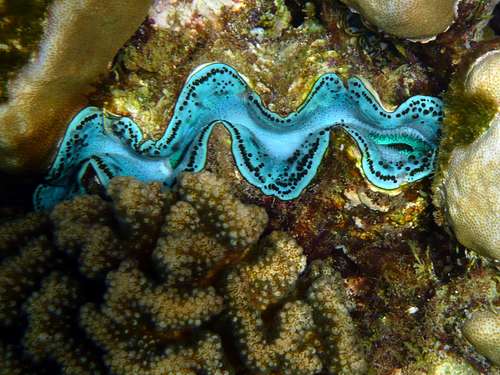





















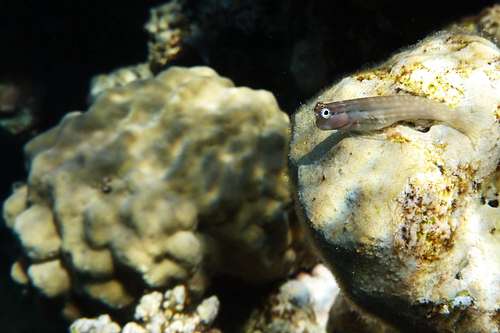
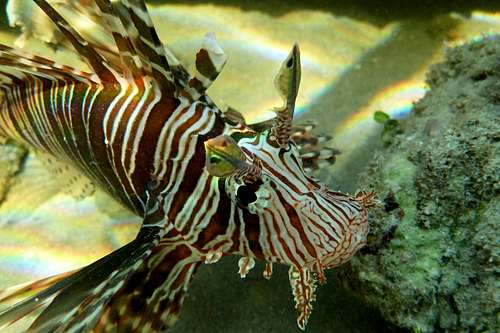










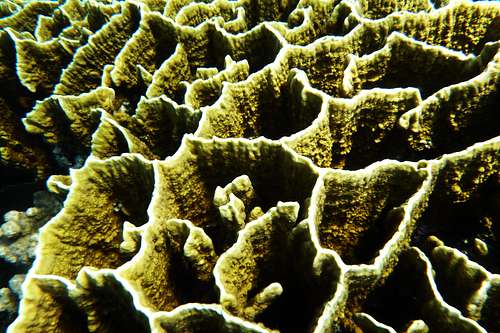
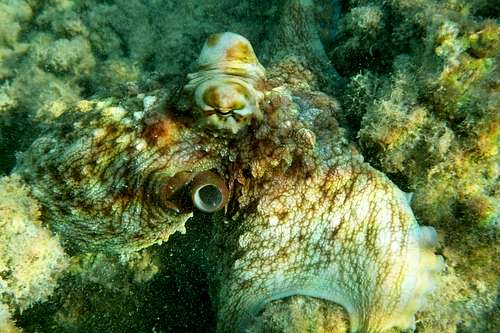





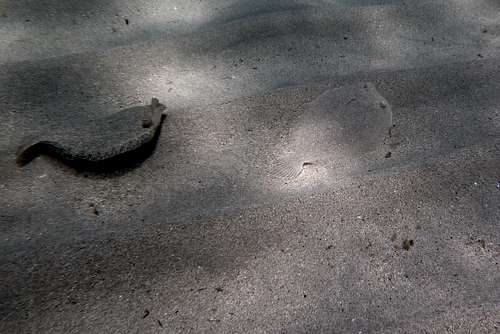





































Comments
Post a Comment